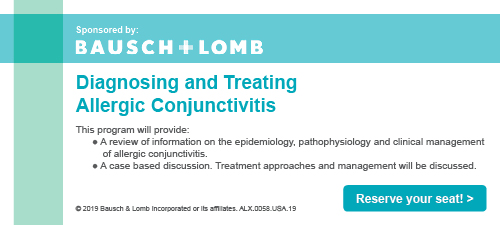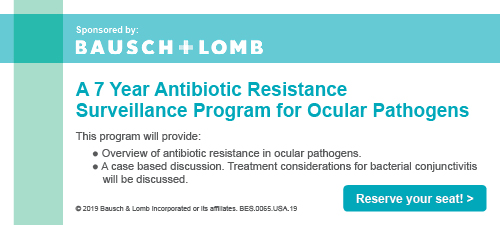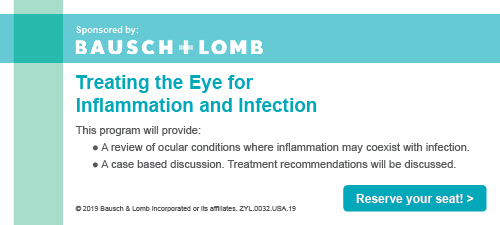
A
weekly e-journal by Art Epstein, OD, FAAO
Off the Cuff: Three Incredible Colleagues
Today I am writing to celebrate the careers of three of my friends. They are colleagues who changed the face of optometry and names that every one of you should recognize. Two of them just announced their retirements from educational institutions. The third will receive a well-deserved and long-overdue award this week. Bruce Onofrey is not only an old friend, he’s one of my personal hero’s from when I started speaking. Before joining the faculty at UHCO, Bruce was a mainstay at just about every OD CE meeting in the country and abroad. A pharmacist before becoming an OD, he helped lead optometry’s expansion into medical eye care with solid science and brilliant clinical perspective. Bruce is also funny as hell. He is the only fellow speaker to pull out a sandwich in the middle of a lecture and eat it in front of an audience now doubled over with laughter. Bruce joined UHCO after a successful career in clinical practice in New Mexico. He tried to get me to join him at the school, but the place just wasn’t big enough for the two of us. Like Ed, Bruce has announced his retirement, but thankfully will continue moving the profession forward. The 4th edition of his Ocular Therapeutics Handbook co-authored with Leo Skorin and Nicky Holdeman will be released in November. He also shared on Facebook that he’s working on a re-release of his text on ocular pharmacology. Finally, this week at the AOA meeting in St. Louis, my longtime friend and NY brother from another mother, Murray Fingeret, will be inducted into the National Optometry Hall of Fame. Murray has long been in my personal hall of fame, having tirelessly worked to further OD-MD relations and advance our presence in glaucoma management. When Murray is in a room, everyone knows it; his laugh is as unique and infectious as it is loud. And though Murray is well-recognized for his accomplishments, most ODs have little idea of the true depth of his contributions or how much he has furthered our profession. Murray has done more to elevate optometry than anyone I know. Thankfully, he is not retiring.Please join me in thanking Ed, Bruce and Murray for all they have done and will continue to do for the profession. You guys rock!
|
|||||
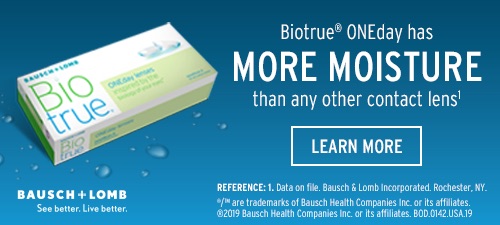 |
||
| Nicotinamide Deficiency in Primary Open-angle Glaucoma | ||||
This study investigated the plasma concentration of nicotinamide in primary open-angle glaucoma (POAG). The plasma of 34 POAG individuals was compared to that of 30 age- and sex-matched controls using a semiquantitative method based on liquid chromatography coupled to high-resolution mass spectrometry. Subsequently, an independent quantitative method, based on liquid chromatography coupled to mass spectrometry, was used to assess nicotinamide concentration in the plasma from the same initial cohort and from a replicative cohort of 20 POAG individuals and 15 controls.
Using the semiquantitative method, the plasma nicotinamide concentration was significantly lower in the initial cohort of POAG individuals compared with controls and further confirmed in the same cohort, using the targeted quantitative method, with mean concentrations of 0.14μM (median: 0.12μM; range, 0.06μM to 0.28μM) in the POAG group (-30%) and 0.19μM (median: 0.18μM; range, 0.08μM to 0.47μM) in the control group. The quantitative dosage also disclosed a significantly lower plasma nicotinamide concentration (-33%) in the replicative cohort with mean concentrations of 0.14μM (median: 0.14μM; range, 0.09μM to 0.25μM) in the POAG group, and 0.19μM (median: 0.21μM; range, 0.09μM to 0.26μM) in the control group. Glaucoma was associated with lower plasmatic nicotinamide levels, compared with controls, suggesting that nicotinamide supplementation might become a future therapeutic strategy. Researchers wrote that further studies would be needed in larger cohorts to confirm the preliminary findings. |
||||
SOURCE: Kouassi Nzoughet J, Chao de la Barca JM, Guehlouz K, et al. Nicotinamide deficiency in primary open-angle glaucoma. Invest Ophthalmol Vis Sci. 2019;60(7):2509-14. |
||||
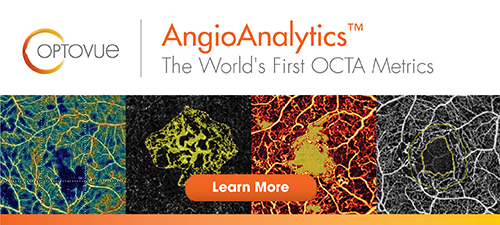 |
||
| Do Systemic Steroids Increase the Risk of Ocular Complication in Uveitis Patients? Focus on an Italian Referral Center | ||||
Medical history and clinical findings of all consecutive patients referred to the uveitis center of Pisa University from January 2015 to January 2017, were reviewed to describe the ocular inflammatory and iatrogenic complications in a cohort of uveitic patients treated in an Italian referral center. Only patients with at least three follow-up visits in the center were included in the series.
A total of 389 patients who visited the center during the study period; 142 patients (90 men and 52 female) satisfied the inclusion criteria. Mean age at presentation was 41 ± 14 years. The most common ocular feature was anterior uveitis (46%), which was mainly unilateral. A specific etiological diagnosis was established in 61% of patients. At presentation, 71.43% of patients were on medical therapy for rheumatic disease; 42.86% of patients used systemic steroids. Cataract and ocular hypertension were the most common ocular complications during the study period but were not statistically related to systemic steroid treatment. Systemic steroids treatment in uveitis patients appeared to increase the risk of iatrogenic complications such as cataract and glaucoma. In the series, increasing age appeared to be the main risk factor for cataract and glaucoma development. |
||||
SOURCE: Posarelli C, Talarico R, Vella G, et al. Do systemic steroids increase the risk of ocular complication in uveitis patients? Focus on a Italian referral center. Clin Rheumatol. 2019; Jun 6. [Epub ahead of print]. |
||||
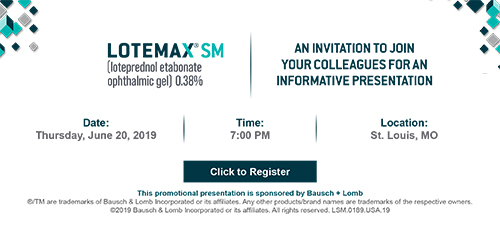 |
||
| Management and Systemic Implications of Diabetic Neovascular Glaucoma | ||||
This study evaluated the efficacy and safety of different treatments for diabetic neovascular glaucoma (NVG) and attempted to determine if the presence of NVG could be a predictor of cardiovascular disease or death. The retrospective, observational cohort study included patients diagnosed with diabetic NVG from 2006 to 2016 at the Hospital Clínico Universitario de Valladolid (Spain). Extracted data included clinical characteristics of the patients, glycated haemoglobin levels and ocular treatment. Visual acuity (VA), intraocular pressure (IOP), cardiovascular events and deaths were registered. A total of 30 eyes from 23 patients were followed for a mean of 4.48 years (SD = 2.82 years). The IOP-lowering intervention groups were: Ahmed implant (11 eyes), laser cyclo-photocoagulation (CPC; six eyes), both (four eyes) or none (nine eyes). IOP success was achieved in 100% of the eyes with Ahmed and/or laser CPC and in 44.4% of the eyes with no IOP-lowering procedure. Most eyes with Ahmed implant (with or without CPC) maintained or improved their VA (100% and 63.6%, respectively). 33.3% of the eyes with laser CPC and 25% of those with no IOP-lowering intervention maintained or improved their VA. Hypotony was the only adverse effect (after laser CPC). No statistically significant difference could be established between low VA (finger count or worse), poor IOP control, or bad metabolic control and mortality or cardiovascular event. However, the four patients who died had poor VA at the time of NVG diagnosis. Investigators concluded that Ahmed implant surgery was a safe and effective treatment option for diabetic NVG. They added that medical treatment alone was not the best option for most cases and that advanced NVG could be an indicator of higher mortality risk in diabetic patients. |
||||
SOURCE: Sánchez-Tabernero S, Juberías JR, Artells N, et al. Management and systemic implications of diabetic neovascular glaucoma. Ophthalmic Res. 2019; Jun 5. [Epub ahead of print]. |
||||
| News & Notes | ||||||||||||||||||||||
| Bausch + Lomb to Host Multi-City Scleral Lens Workshop As part of its CLEAR (Customized Lens Education And Resources) initiative, Bausch + Lomb announced that its Specialty Vision Products business will host a multi-city workshop to offer eye care professionals hands-on training to support their patients with challenging visual conditions using the Zenlens family of scleral lenses. During the workshops, attendees will learn about the features and benefits of the company’s Zenlens scleral lenses, including SmartCurve technology, Zenlens Multifocal lenses and the Tangible Hydra-PEG coating, and they will be able to gain first-hand experience with the lenses. Learn more. |
||||||||||||||||||||||
| NORA & Vestibular Disorders Association Offer Educational Resource on Vestibular-vision Connection The vestibulo-ocular reflex has an important role in producing eye movements and stabilizing the image during head motion and helping people to maintain their balance. To assist individuals who may be experiencing visual dysfunctions contributing to dizziness and balance problems, the Neuro-Optometric Rehabilitation Association and Vestibular Disorders Association developed The Vestibular-Vision Connection patient-education resource. Read more. |
||||||||||||||||||||||
| ISVA Appoints Drs. Teig and Appelbaum to Board The International Sports Vision Association appointed Donald Teig, OD, FAAO, and Greg Appelbaum, PhD, to its board. A pioneer in the field of visual-neurocognitive training, Dr. Teig began his sports testing with training 15 teams in Major League Baseball in 1980. He is the founder and medical director of The A Team – High Performance Vision Associates, a 65-member group of elite sports medicine professionals, and executive director of the exclusive vision care provider of the NHL Florida Panthers Hockey Team. Greg Appelbaum, PhD, is an associate professor in the Duke University School of Medicine, where he heads the Human Performance Optimization Lab and directs the Brain Stimulation Research Center. His research addresses the brain mechanisms underlying visual-motor control, and how these systems can be improved thorough behavioral, neurofeedback and neuromodulatory interventions. Read more. |
||||||||||||||||||||||
| OcuSoft Introduces Lid Scrub Allergy Eyelid Treatment for Red, Itchy Allergy Eyes OcuSoft announced the availability of new OcuSoft Lid Scrub Allergy Eyelid Cleanser for allergy conditions in pre-moistened pads. The cleanser removes oil, debris, pollen and other contaminants from the eyelids while utilizing green tea extract, tea tree oil and PSG-2 (Phytosphingosine) to reduce redness, inflammation and itching of allergy eyelids. Read more. |
||||||||||||||||||||||
|
||||||||||||||||||||||
|
Optometric Physician™ (OP) newsletter is owned and published by Dr. Arthur Epstein. It is distributed by the Review Group, a Division of Jobson Medical Information LLC (JMI), 11 Campus Boulevard, Newtown Square, PA 19073. HOW TO ADVERTISE |


